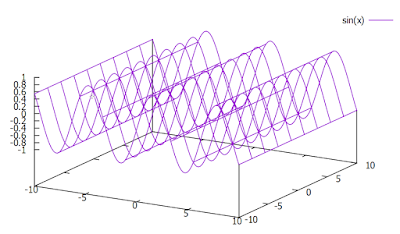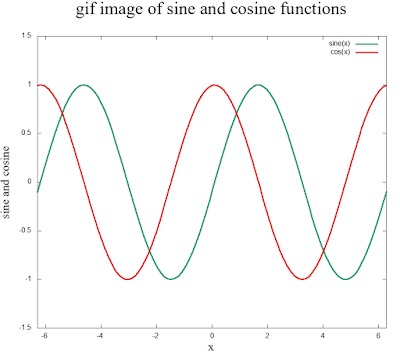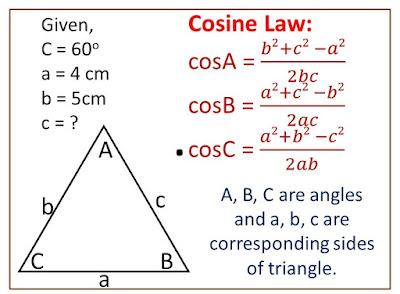Useful concepts on limits of function - Basic mathematics(+2 level)
We usually denote a function by f(x).
What is a function ?
-> A function is nothing but a mapping or link of one location to another. If we consider these two locations as two non-empty sets X and Y, then a function f from X to Y is a rule of relation that assigns a unique element of Y to each element of X. The unique element of Y corresponding to an element x of X (x`\in`X) assigned by f is denoted by f(x), so that we can write
y = f(x)
Symbol used in Mathematics,
f: X `\rightarrow` Y
This symbol denotes that f is a function through which each element of Y is assigned to unique element of X. Elements of X, x's are called domain of y under f whereas elements y = f(x) are called image of x under f.
Value of a function f:
Suppose f is a function from X to Y. Also, x = a is an element in X (domain of f ) then the image f(a) which is an element of Y corresponding to x = a is said to be the value of function f at x = a. So, each value of f may be calculated by using corresponding domain.
For example, if f(x) = `2x^3 + 3x + 5` is a function, then value of f at x = 1 is,
`f(x=1) = 2 \times 1^3 + 3 \times 1 + 5`
f(x=1) = 10.
`\therefore` f(1) = 10, which is a value of f(x) at x = 1.
In most cases, one has to determine value of function by considering it's limits.
Limits of Function:
- A number M is said to be the limit of function f(x) at a point x = m if for every arbitrary chosen positive as well as very small number `\epsilon` , there exists corresponding number ẟ, greater than zero such that |f(x)-M| < `\epsilon` for all values of x for which `m_o < |x-m|< ẟ`, where |x-m| means the absolute value of x-m without any regard to sign. Symbolically, `\lim_(x -> m)` f(x) = M.
- If x approaches to 'm' from right, that is, from larger values x than m, the limit of f(x) is called the right hand limit and is denoted as `\lim_( x->m^+ )` f(x).
- If x approaches to m from left, that is, from the smaller values of x than m, the limit of f(x) is called the left hand limit denoted by `\lim_( x->m^- )`f(x).
For example, if x has values as ..... -3 -2, -1, m, 1, 2, 3, ................ or
0.01, 0.02, 0.03, m, 0.06, 0.07, 0.08, then value of x approaching m from right side of m is called right hand limit, whereas those approaching from left side of m is are called left hand limit.
Some results of limit of functions:
If f and g are two real valued functions defined over certain domain, then
- `\lim_( x->m )[f(x) \pm g(x)] = \lim_( x->m )f(x) \pm \lim_( x->m )g(x)`.
- `\lim_(x->m)[f(x) \cdot g(x)] = \lim_(x->m)f(x) \cdot \lim_(x->m)g(x)`.
- `\lim_(x->m) [\frac{f(x)}{g(x)}] = \frac{\lim_(x->m)f(x)}{\lim_(x->m)g(x)}` provided that `\lim_(x->m)g(x) \ne 0`.
- `\lim_(x->m)[cf(x)] = c \times \lim_(x->m)f(x)` where c is a constant.
L-Hospital's Rule:
L-Hospital's rule is a very famous and useful tool to solve problems of limit and continuity when there arises a case such as `\frac{0}{0}` or `\frac{\infty}{\infty}` to the limiting value of fraction of functions f(x) and g(x) given by `\lim_(x->m)\frac{f(x)}{g(x)}`. These results are called indeterminate forms.
So, for two functions f(x) and g(x),
If `\lim_(x->m) \frac{f(x)}{g(x)} -> \frac{0}{0}` or `\frac{\infty}{\infty}`, then using L-Hospital's rule, we can have
`\lim_(x->m)\frac{f(x)}{g(x)} = \frac{f \prime (m)}{g \prime (m)}`.
Where f'(m) and g'(m) are functional values or limiting values of derivatives of f(x) and g(x) respectively.
Some Examples:
- `\lim_(\theta ->0) \frac{sin \theta}{\theta} = 1`, `\theta` is angle meaured in radians.
- `\lim_(\theta -> \infty) \frac{sin \theta}{\theta} = 0`.
- `\lim_(x->0) \frac{e^x - 1}{x} =1`.
- `\lim_(x->0) \frac{log(x +1) }{x} = 1` and so on.
Problems and their Solutions:
1.) Solve: `\lim_(x->0)\frac{e^x + e^(-x) - 2}{x^2}`.
Solution:-
Here,
L = `\lim_(x->0) \frac{e^x + e^(-x) - 2}{x^2}`
= `\lim_(x->0)\frac{e^x + \frac{1}{e^x} - 2}{x^2}`
=`\lim_(x->0) \frac{e^(2x) +1 - 2e^x}{x^2 e^x}`
= `\lim_(x->0)\frac{(e^x - 1)^2}{x^2 e^x}`
= `\lim_(x->0) (\frac{e^x - 1}{x})^2 \cdot \lim_(x->0) \frac{1}{e^x}`
= 1. `\frac{1}{e^0}`, `\therefore` `e^0 = 1`.
= 1. 1
= 1. //
2.) Solve: ` \lim_(\theta->0) \frac{cosec \theta - cot \theta}{\theta}`.
Solution:-
Here,
L = `\lim_(\theta -> 0) \frac{cosec \theta - cot \theta}{\theta}`.
= `\lim_(\theta -> 0) \frac{ \frac{1}{sin \theta} - \frac{cos \theta}{sin \theta}}{\theta}`.
=`\lim_(\theta -> 0) \frac{\frac{1- cos \theta}{sin \theta}}{\theta}`.
=`\lim_(\theta ->0) \frac{1 - cos \theta }{\theta \cdot sin \theta}`.
We need to express this to formula such that we can use `\lim_(\theta -> 0) \frac{sin \theta}{\theta} = 1`.
`\therefore` L = `\lim_(\theta -> 0) \frac{1-cos \theta}{\theta^2 \cdot \frac{sin \theta}{\theta}}`.
L = `\lim_(\theta -> 0) \frac{1-cos \theta}{\theta^2} \cdot (\frac{1}{\lim_(\theta->0) \frac{sin \theta}{\theta}})`.
= `\lim_(\theta -> 0)\frac{1-cos \theta}{\theta^2} \cdot 1`
But `1 - cos \theta = 2sin^2 \frac{\theta}{2}`, So
L = `\lim_(\theta -> 0) \frac{2 sin^2 \frac{\theta}{2}}{\theta^2}`.
= `\lim_(\theta -> 0) \frac{2}{4} (\frac{sin \frac{\theta}{2}}{\frac{\theta}{2}})^2`.
= `\frac{1}{2} \cdot (\lim_(\theta->0)\frac{sin \frac{\theta}{2}}{\frac{\theta}{2}})^2`.
= `\frac{1}{2} \cdot 1`
= `\frac{1}{2}` //
To prove very important result in limits,
`\lim_(\theta -> 0) \frac{sin \theta}{\theta} =1`
Consider a circle MNX with center at O and radius r as shown in figure.
That is, OX = OM = r.
XM is an arc that subtends angle `\theta` at O.Let XY be a tangent at point X of circle which meets NM at Y. Then we join X to M and draw XZ perpendicular to NM. Then
Area of `\triangle`OXM `\le` Area of sector AXM `\le` Area of `\triangle`OXY
..........................(1)
Here,
Area of `\triangle` OXM = `\frac{1}{2} OM \cdot XZ` = `\frac{1}{2} r \cdot r sin\theta`.
= `\frac{1}{2} r^2 sin\theta`.
Area of sector OXM = `\frac{1}{2} OX \cdot \overarc (XM)`
= `\frac{1}{2} r \cdot r \theta`
= `\frac{1}{2} r^2 \theta`.
Area of `\triangle` OXY = `\frac{1}{2} OX \cdot XY`
= `\frac{1}{2} r \cdot r tan \theta`
= `\frac{1}{2} r^2 tan \theta`.
Now, using these values in (1), we have
`\frac{1}{2} r^2 sin \theta \le \frac{1}{2} r^2 \theta \le \frac{1}{2} r^2 tan \theta`.
Here, `\frac{1}{2} r^2` cancels out from all terms. So,
` sin \theta \le \theta \le tan \theta`.
=> `sin \theta \le \theta \le \frac{sin \theta}{cos \theta}`
Dividing all sides by `sin \theta`, we get
`1 \le \frac{\theta}{sin \theta} \le \frac{1}{cos \theta}`
Taking reciprocal of all sides,
`1 \ge \frac{sin \theta}{\theta} \ge cos \theta`
Now taking limit as `\lim_(\theta -> 0)` on all sides,
`\lim_(\theta -> 0) 1 \ge \lim_(\theta -> 0) \frac{sin \theta}{\theta} \ge \lim_(\theta -> 0) cos \theta`
But `\lim_(\theta -> 0) cos \theta = 1`, So
`1 \ge \lim_(\theta -> 0) \frac{sin \theta}{\theta} \ge 1`
Since values of `\lim_(\theta -> 0) \frac{sin \theta}{\theta}` is greater and equal to 1 as well as smaller and equal to 1. So it must give us.
`\lim_(\theta ->0) \frac{sin \theta}{\theta} = 1`.
`\therefore \lim_(\theta ->0) \frac{sin \theta}{\theta} = 1`. Hence proved.
This formula can also be understood in this way,
For small `\theta`, `sin \theta \approx \theta`.
So for value of `\theta` as smaller as 0 but not exactly 0, the ratio `\frac{sin \theta}{\theta}` becomes equal to 1.
----------------------
Thanks for the visit !
😊😊😊😊😊
Do Follow for more updates
----------------------










Comments
Post a Comment